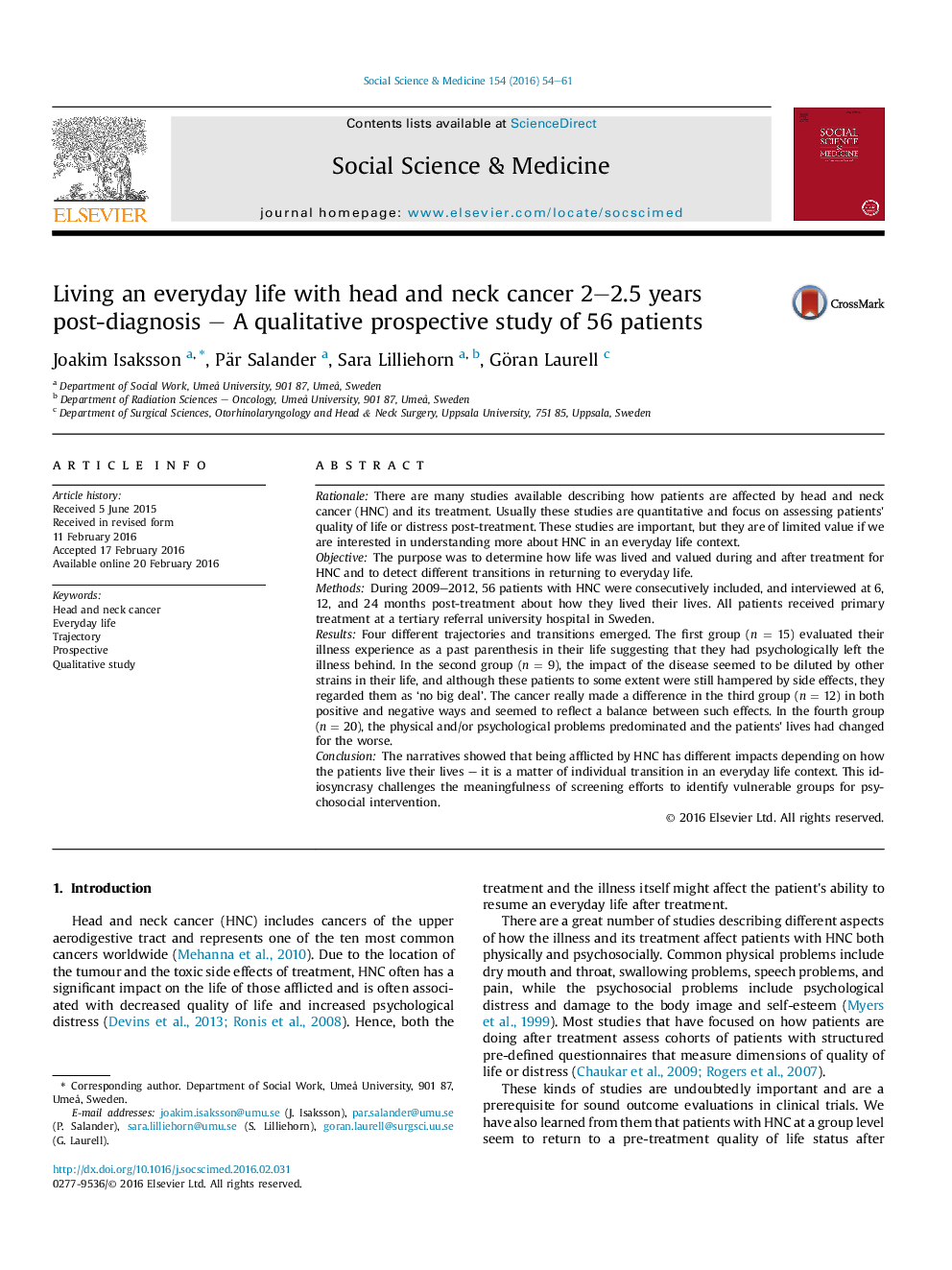| کد مقاله | کد نشریه | سال انتشار | مقاله انگلیسی | نسخه تمام متن |
|---|---|---|---|---|
| 952220 | 1476015 | 2016 | 8 صفحه PDF | دانلود رایگان |
• We investigated the experiences of head and neck cancer (HNC) in an everyday life context.
• 56 patients with HNC were interviewed repeatedly over the course of two years.
• HNC has different impacts depending on individual life circumstances.
• It is a matter of individual transition in an everyday life context.
• The results challenges the meaningfulness of screening patients with HNC.
RationaleThere are many studies available describing how patients are affected by head and neck cancer (HNC) and its treatment. Usually these studies are quantitative and focus on assessing patients' quality of life or distress post-treatment. These studies are important, but they are of limited value if we are interested in understanding more about HNC in an everyday life context.ObjectiveThe purpose was to determine how life was lived and valued during and after treatment for HNC and to detect different transitions in returning to everyday life.MethodsDuring 2009–2012, 56 patients with HNC were consecutively included, and interviewed at 6, 12, and 24 months post-treatment about how they lived their lives. All patients received primary treatment at a tertiary referral university hospital in Sweden.ResultsFour different trajectories and transitions emerged. The first group (n = 15) evaluated their illness experience as a past parenthesis in their life suggesting that they had psychologically left the illness behind. In the second group (n = 9), the impact of the disease seemed to be diluted by other strains in their life, and although these patients to some extent were still hampered by side effects, they regarded them as ‘no big deal’. The cancer really made a difference in the third group (n = 12) in both positive and negative ways and seemed to reflect a balance between such effects. In the fourth group (n = 20), the physical and/or psychological problems predominated and the patients' lives had changed for the worse.ConclusionThe narratives showed that being afflicted by HNC has different impacts depending on how the patients live their lives – it is a matter of individual transition in an everyday life context. This idiosyncrasy challenges the meaningfulness of screening efforts to identify vulnerable groups for psychosocial intervention.
Journal: Social Science & Medicine - Volume 154, April 2016, Pages 54–61
